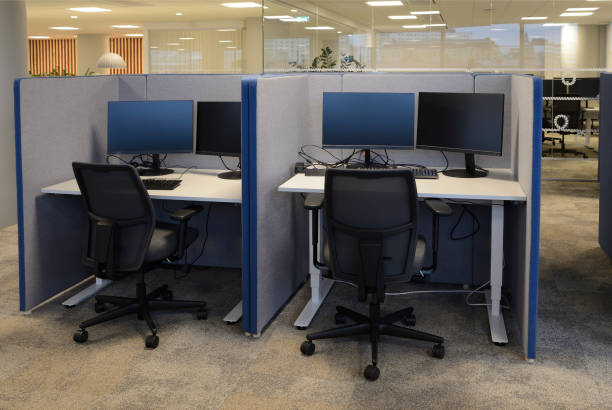
Office Screens: The Modern Solution for Privacy and Efficiency
In the evolving landscape of the modern workplace, the need for privacy, efficiency, and adaptability has become paramount. Open office layouts have gained popularity for fostering collaboration, but they can sometimes compromise individual productivity and concentration. This is where office screens come into play as a contemporary solution to strike a balance between open spaces and private workstations.

The Changing Dynamics of the Modern Workplace
Open Concept vs. Individual Needs
The open-concept office was once hailed as a revolutionary approach to fostering collaboration and creativity among employees. However, as organizations continue to adapt to changing dynamics, they have come to realize that one size does not fit all. While open spaces encourage interaction and idea-sharing, they often lack the privacy and personal space necessary for focused work.
The Impact of Distractions
In an open office environment, distractions are an everyday challenge. Colleagues chatting, phone calls, and even the constant hum of background noise can disrupt concentration and hinder productivity. Moreover, employees might feel uncomfortable discussing sensitive or personal matters in an open setting.
The Role of Office Screens
Enhancing Privacy
One of the primary functions of office cubicle partitions is to provide privacy. These screens come in various sizes, materials, and designs, allowing organizations to tailor their workspace to suit specific needs. Individual workstations can be partitioned off with screens, providing employees with a private area to focus on their tasks without the constant distraction of their surroundings. Privacy screens are especially valuable for tasks that require deep concentration, such as writing, coding, or data analysis.
Creating Adaptable Workspaces
Office partitions offer the flexibility to transform the workspace as needed. They can be easily rearranged or removed to accommodate changing requirements. This adaptability is particularly valuable for businesses that experience frequent growth or rearrangement of teams. As the company evolves, so too can the workspace, ensuring that it remains functional and efficient.
Promoting Employee Well-being
The presence of Cubicle partitions can positively impact employee well-being. They provide a sense of personal space and control over one’s environment. This, in turn, can reduce stress and enhance job satisfaction. Employees are more likely to feel valued and comfortable in their workspace when they have the option to control their level of privacy.
Types of Office Cubicle Partitions
Desk Dividers
Desk dividers are screens that can be attached to desks or workstations, creating individual, partitioned spaces for employees. These dividers come in various materials, from fabric to acrylic, and can be customized to match the overall office aesthetic.
Room Dividers
For larger open spaces, room dividers are ideal for creating separate areas within the office. These screens can be used to carve out meeting spaces, relaxation zones, or even private workstations. They provide a level of separation while maintaining an open, airy atmosphere.
Acoustic Screens
Acoustic screens are designed to reduce noise and echo in the workplace. They are especially useful in open offices with high ceilings, where sound can easily bounce around and create distractions. Acoustic screens come in various shapes and sizes and can be placed to create a more peaceful and focused work environment.
In conclusion, as the modern workplace continues to evolve, striking the right balance between open spaces and private workstations has become a crucial consideration. Office screens offer a versatile and effective solution to this challenge, enhancing privacy, concentration, and overall efficiency in the workplace. By providing employees with the option to control their level of privacy, organizations can promote employee well-being and achieve higher levels of productivity. In a world where adaptability is key, office partitions have emerged as an indispensable tool for creating a dynamic and efficient workspace that meets the diverse needs of the modern workforce.